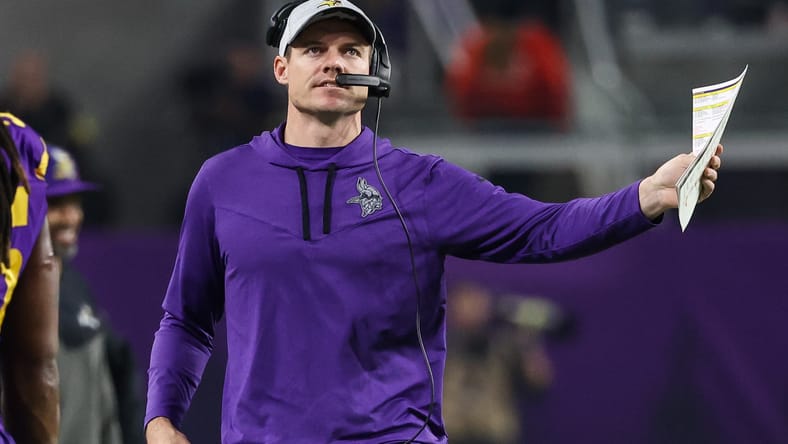Kevin O’Connell’s Onside Kick Decision was the Right Call

Kevin O’Connell didn’t have his best game yesterday. There are reasonable criticisms that can be made for several decisions during the 34-23 loss to the once-lowly Lions. That being said, Kevin O’Connell’s onside kick call was not a bad one. In fact, I believe it was the move that gave Minnesota the best shot at winning.
Earlier in the day, VT‘s Dustin Baker took on three major decisions that ended up going poorly for Minnesota: the Dalvin Cook trick play (that resulted in a fumble), the 2-point conversion, and the onside kick.
Dustin’s belief is that going for an onside kick makes very little sense given the changes to kickoffs: “Before the onside-kick rule changes about five years ago, the odds of recovering an onsider were about 20%. Now, that percentage is about 6%. Onside kicks — unless utilized out of sheer desperation — are birdbrained. They don’t work. In fact, it’s breaking news when they do pan out.” His point is well taken; the numbers aren’t great when it comes to getting possession back from an onside kick.
Nevertheless, Kevin O’Connell’s onside kick decision was the right move. Let’s rewind to the end of the game.
Minnesota just shrunk the lead down to 8 points following a K.J. Osborn touchdown and Greg Joseph extra point:
O’Connell had a decision to make on the kickoff that followed. He could give Joseph the green light to drill the ball deep, putting his defense back onto the field in the hope that they could get a stop.
As you can see in the video, O’Connell would even have the benefit of 2 timeouts to help keep the clock from dying. Partner those 2 timeouts with a 2-minute warning and playing defense had some credibility. A 3-and-out would have allowed the Vikings to have some time to march down the field in time for a last-second TD.
Alternatively, Minnesota could pursue an onside kick, a play that seldom works. Joseph would be tasked with kicking the ball short in the hopes that the ball would take a weird bounce or two, perhaps allowing one of Minnesota’s players to pick it up before someone in a blue jersey could.
As a lot of folks suggested on Twitter, Kevin O’Connell’s onside kick was likely the result of having next to no confidence in the defense. Can we blame him?
Detroit possessed the ball 4 times in the second half. All 4 times Detroit scored points. The first two drives resulted in touchdowns. Leading into the half, Detroit had two drives that perhaps should have resulted in points. Their second-last drive of the opening half led to a TD and the final one led to the missed field goal.
In other words, Ed Donatell’s defense had given no reason to suggest they could get the critical stop. By that point in the game, O’Connell was forced to choose between Bad Option A and Bad Option B. In the end, he did his best with the poor choices that were in front of him. Sure, the chances aren’t great, but an onside kick at least puts the game’s outcome in the hands of the special teams.
The wild thing is that the defense still had a chance to come up with a critical stop. To be sure, life was more difficult; Detroit began on Minnesota’s 44. Nevertheless, they faced a 3rd & 7 following the 2-minute warning. Holding Detroit to 0 yards would have forced Dan Campbell into deciding to go for a FG that was flirting with 60 yards, punt the football, or attempt a 4th & long.
Predictably, the defense couldn’t get the job done. Penei Sewell – yes, Detroit’s star offensive tackle – caught a pass to pick up the first down.
O’Connell is human. He’s going to make mistakes, just like the rest of us. People can come up with arguments for how the rookie HC erred in Sunday’s game. Going for the onside kick, however, wasn’t one of his mistakes. In a tough spot, O’Connell decided to give his special teams a shot at pulling off a great play.
Given the broader context of the game, Kevin O’Connell made the right call.

Colts Reveal Starting QB at Vikings
